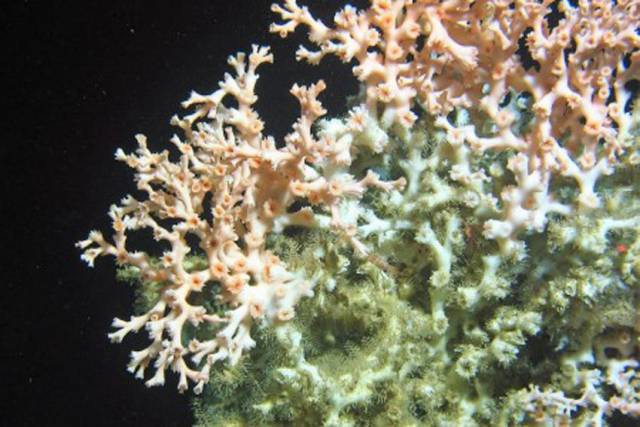#MarineScience - One of Ireland’s deep water coral reefs is changing at a rate of some 20% over four years, faster than previously thought.
That’s according to new research published by Dr Aaron Lim of the Marine Geology Research Group at University College Cork.
Images and samples were retrieved from the cold water reefs on two separate occasions using the Marine Institute’s ROV Holland 1 operated from the RV Celtic Explorer — representing “the first ever successful attempt at imaging an entire deep water reef” at 1km below the surface, explains Dr Lim.
“Over half the species of coral in the world are cold, deep-water species and many of them can be found in Irish waters between water depths of 600m and 1,000m,” he added.
One of the most prolific places on the planet for deepwater coral development is the Belgic Mound Province, at the Porcupine Bank on the Irish continental margin, where there are over fifty giant coral mounds and 300 smaller coral reefs.
In 2011 and 2015, the Holland 1 was used by marine scientists to capture images and footage of the entire surface of one of these reefs, “which has for the first time has provided us the insight into how the reefs grow at this scale,” Dr Lim said.
“Initial results showed that the reef was extremely variable and is coping with the contemporary environmental conditions,” said Prof Andy Wheeler, head of geology at UCC and who has been working in Ireland’s corals for 20 years.
“However, the issue is that it is so difficult to take images of the deep ocean that we can only get bits of information from these reefs during an expedition.”
Dr Lim added: “The importance of this technology and having access to the national research vessel has meant that we can get access to what was only a few decades ago inaccessible. We can now provide a detailed analyses of the reef, showing that it changed at a rate of 20% in four years.”
Unlike its tropical water counterparts, which suffer from mass coral bleaching events, the proportion of live coral on this reef did not change.
“The change was in fact an increase in the proportion of dead coral and coral rubble areas, which is not the result of live coral dying, but possibly due to the result of strong currents exposing dead coral buried beneath older parts of the reef,” Dr Lim said.
“Assuming the change continues at this rate, then in 20 years the reef will entirely change.”
Dr Lim and Prof Wheeler have commenced a sizeable research project to monitor a range of coral habitats on the Irish margin with the aim of understanding what is driving these habitats and what makes them change. This research has been funded by the Irish Research Council, the Marine Institute and UCC.
































































